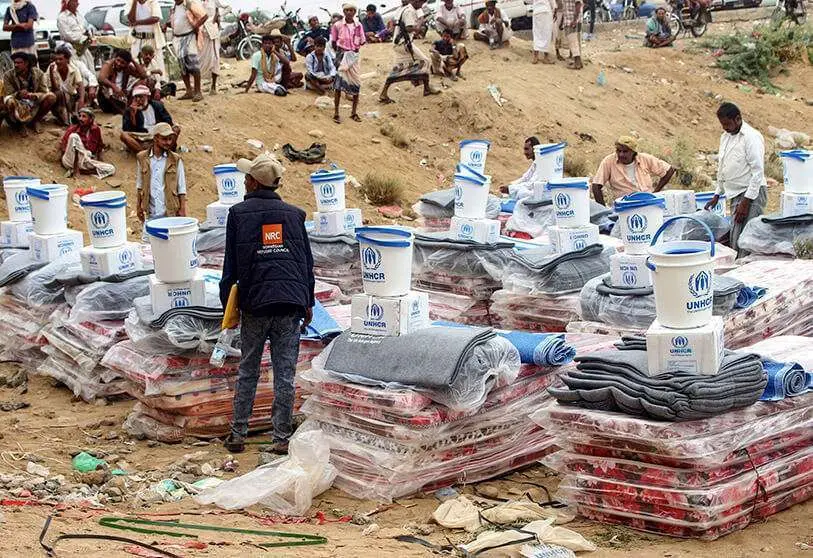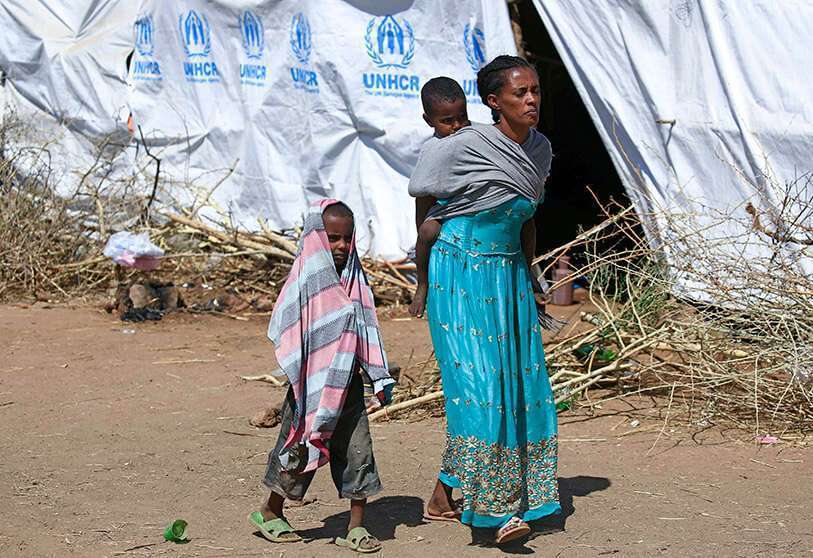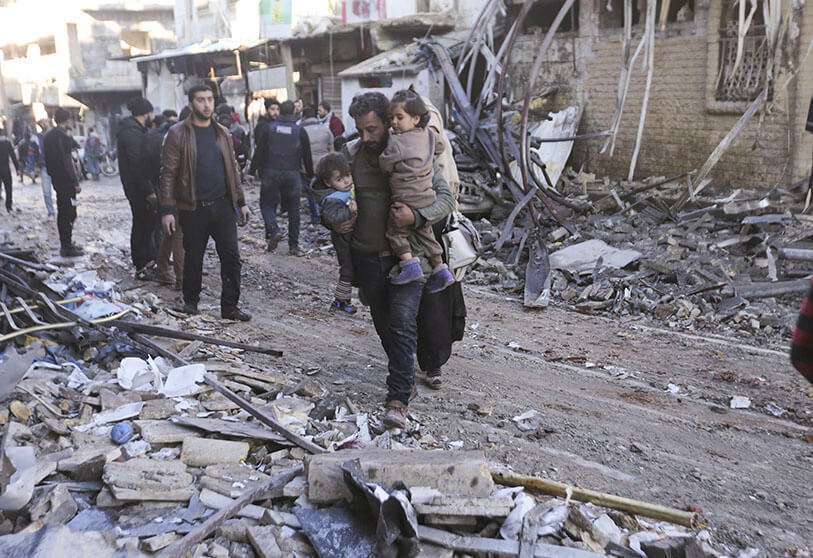Vulnerable Lives

The Covid-19 pandemic has exacerbated some of the most acute humanitarian crises on the planet, from the conflicts in Syria and Yemen, food shortages in the central Sahel and southern Africa to terror activity in the Chad Basin.
It is not the virus itself wreaking havoc in these vulnerable corners of the world but rather the measures enforced to contain the disease and the diversion of resources that accompanies them.
At the end of 2019, the United Nations Office for the Coordination of Humanitarian Affairs (OCHA) estimated that, in 2020, there would 169 million people in need of humanitarian aid and that it would cost some $29 billion to reach 109 million of those in need.
Twelve months and one pandemic later, the OCHA’s 2021 Global Humanitarian Overview said that the cost, in reality, had to be increased to $39 billion to provide assistance to 265 million people out of an estimated 441 million in need of aid.

The interim director of the Center for Strategic and International Studies (CSIS), Jacob Kurtzer, warns: “The impact I think is felt in terms of the intersection of an increased need and a decreased funding level.”
Despite there being an uptick in international contributions this year, the OCHA reported the largest-ever deficit in aid funds, at some $22 billion, according to the 2021 Overview.
“A lot of humanitarian action relies on global supply chains, so the disruption in supply chains, the prioritization of Covid-related material impacts the ability to do ongoing work,” Kurtzer tells Efe.
The pandemic has been a setback for humanitarian activity itself, the natural cycle for which begins with stabilization and moves towards relief and recovery.
However, being in the middle of a crisis can knock progress back and act as a destabilizing factor.
And, of course, border closures and lockdowns have taken their toll on the most impoverished and indebted economies.
In war zones, the situation is even more complicated as the virus becomes a feature of the conflict and warring parties accuse each other of spreading it or of mismanaging resources.
In Syria, almost a decade of civil war has devastated the country’s health system and observers fear the number of Covid-19 cases could be massively underreported, both in areas of government control and in territories held by the opposition, such as Idlib province.
“The nature of the conflict even prior to the outbreak of Covid meant that the response was so severely limited,” Kurtzer adds.
“The use by the (Bashar al-) Assad government and its supporters of aerial attacks on medical facilities and the targeting of healthcare infrastructure, it is such a devastating crime of war because you don’t just deal with the immediate impact you undermine the capacity to deal with basic health things.”
In January, aid into Syria was held up when the transit point into Idlib was closed and six months later the UN Security Council was unable to renew transit via another point of entry when the proposal was vetoed by Beijing and Moscow, the latter a close ally of the Syrian regime.
NGOs and international agencies hit a roadblock with only a small trickle of trucks being able to cross via the one point of entry into rebel-held northwestern Syria.
“How do you prioritize what is the greatest need when people are hungry, are lacking in shelter, are lacking in basic sanitation equipment and concerned about the impact of Covid?” Kurtzer asks.
Elsewhere in the Middle East, Yemen is the scene of the worst humanitarian crisis on the planet, in the words of UN secretary-general, Antonio Guterres.
More than two-thirds of the country is in need of humanitarian assistance.
It has been the scene of an armed conflict between Houthi rebels and the internationally-recognized government since 2014, a war that has destroyed its healthcare infrastructure. Less than half the population has access to a hospital.
Kurtzer is concerned about the impact COVID-19 could have on a country brought to its knees by hunger and war.
“We know about COVID, the way it attacks the body,” he says.

There are several causes behind the food insecurity and malnutrition on the African continent and the pandemic has done nothing but worsen the situation.
The causes include floods in eastern Africa, droughts in the Sahel, and the eastern and southern parts of the continent, plagues of locusts in the east and migratory locusts in the south, and long-standing conflicts in several countries.
“Before COVID, in 2019, already we had about 235 million people who were facing hunger so when COVID-19 arrived now you can imagine what the situation is going to be,” Abebe Haile-Gabriel, FAO regional representative for Africa, tells EFE.
The coronavirus has had an impact on the exports of the basic products from the continent, while agricultural production has been severely affected by difficulties in accessing seeds, fertilizers and food for livestock.
It has even led to harvest loss as the “supply chains were disrupted because of limited access to markets whether for livestock or for crops or in particular for perishable food products such as vegetables, fruits, fish,” he adds.
Employers have stopped paying salaries, especially in the informal economy. Public funds for social programs have been reallocated to the health sector, while children have been deprived of school, missing access to food programs.
“The impact was across the board and it was really total, even though COVID has not caused all the problem, we are talking multiple causes, COVID was unique it has really exacerbated the problem,” he says.
Only North African countries are not struggling with food insecurity, while the countries of the Sahel and Horn of Africa have their share of malnutrition, aggravated by armed conflicts or terror.

In the heart of the continent, in the Chad Basin, terror is hitting hard and the humanitarian outlook is especially horrific.
There has been a “constant” increase in the number of displaced people since the pandemic broke out, Abim Sharpe, a Chad Information analyst at ACAPS tells EFE.
ACAPS is a platform created by the NGOs HelpAge International, Merlin and the Norwegian Refugee Council to advise the different actors in the response to humanitarian crises.
Terror and violence frequently prevent the immediate delivery of humanitarian aid and the interruptions in the supply chain due to the coronavirus have worsened the situation.
Within Chad, the number of people in need of humanitarian aid increased from 5.3 million at the beginning of the year to 6.4 million due to the pandemic, according to other organizations’ data analyzed by ACAPS.
“The Boko Haram areas of operation across all of Lake Chad transcend international borders in Chad, Niger and Cameroon, so (it is) a difficult area to fight against, to defeat Boko Haram,” Sharpe adds.
In Chad, Sahel, Yemen and Syria, the pandemic has made precarious lives more vulnerable.








